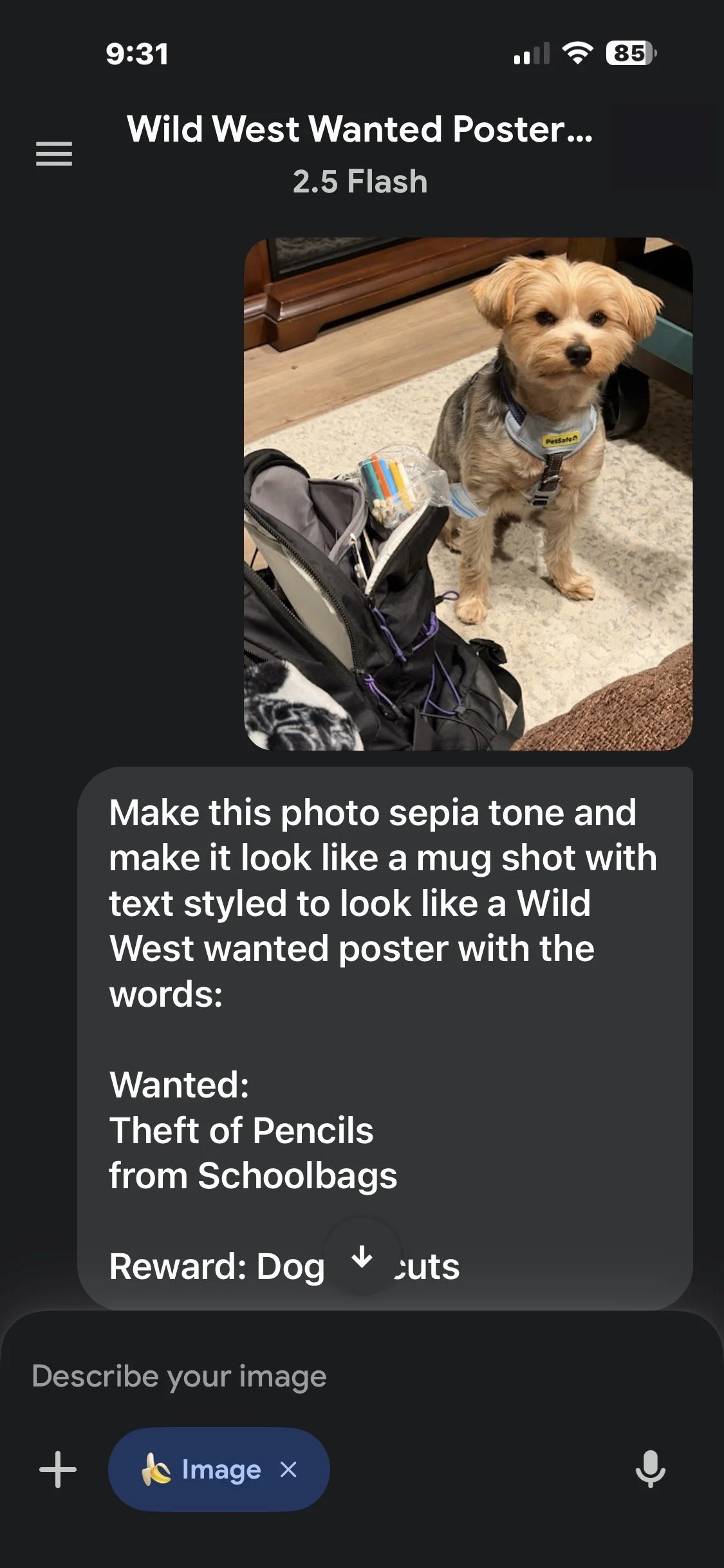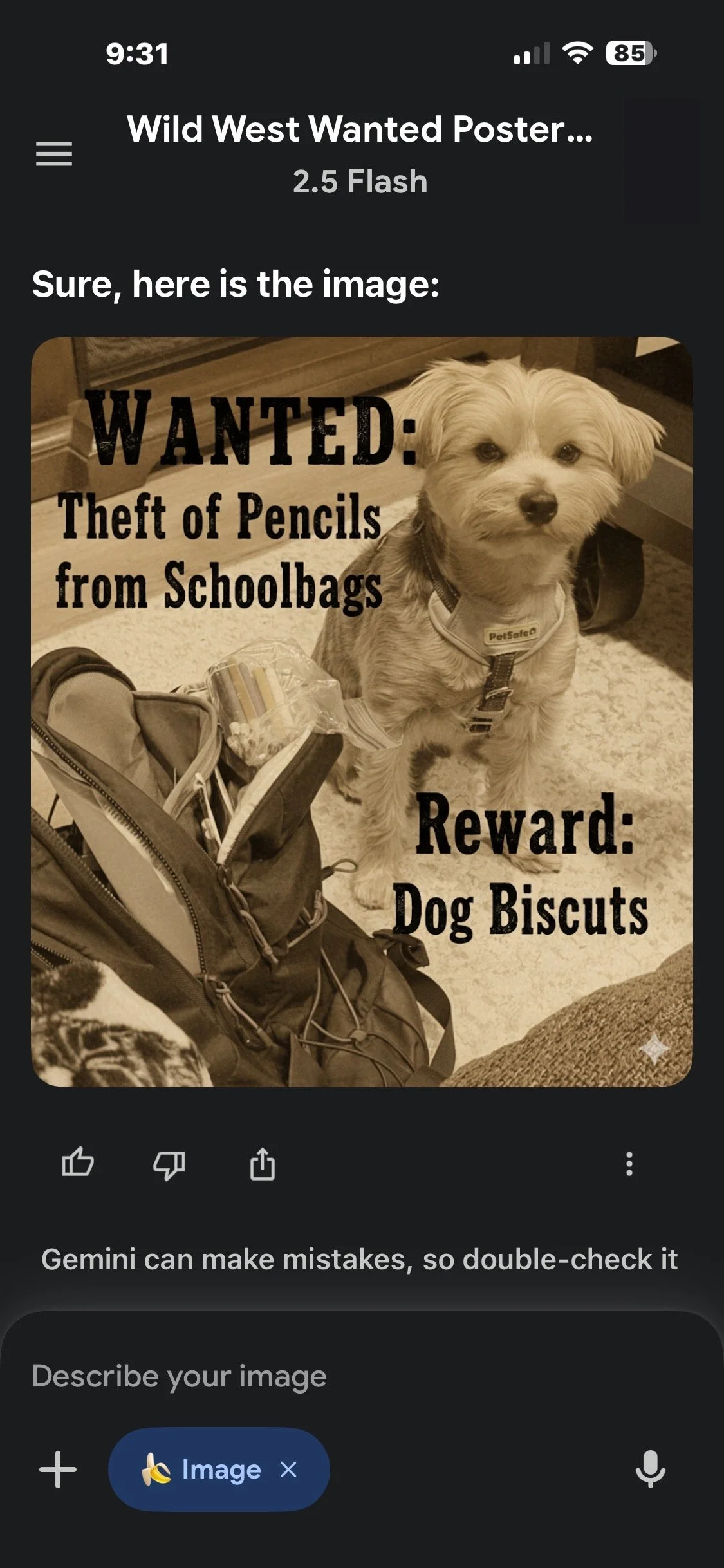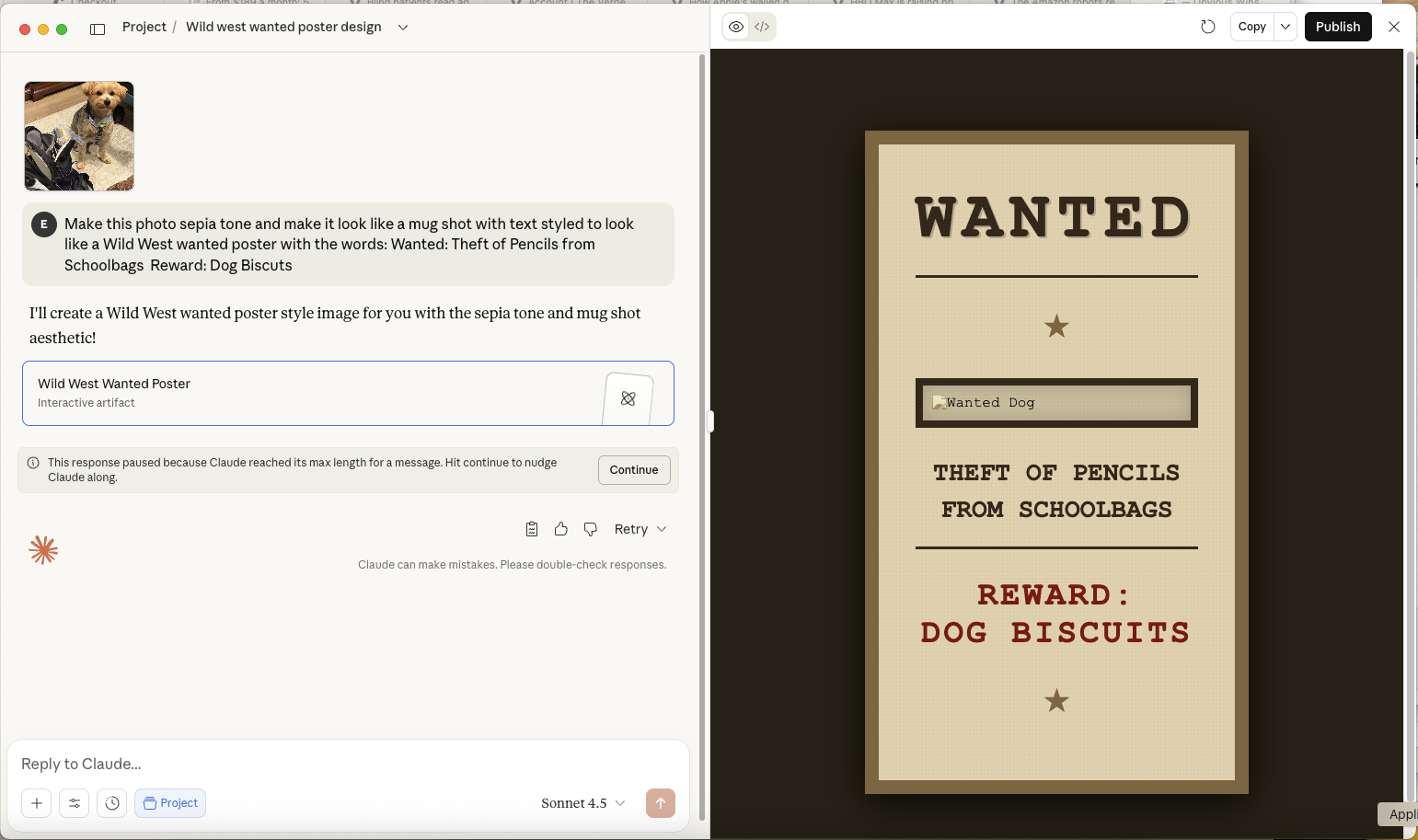10 min experiment using AI tools
Out of curiosity, I wanted to test the “free” plan of consumer AI tools to see how effective they are at completing a somewhat vague task.
Prompt: Make this photo sepia tone and make it look like a mug shot with text styled to look like a Wild West wanted poster with the words:
Wanted: Theft of Pencils from Schoolbags
Reward: Dog Biscuts
This is what OpenAI’s ChatGPT showed me:
ChatGPT screen shot informing the user that it’s aware this is taking time, but it will be faster if the user pays for a Plus plan
Output from ChatGPT that took several minutes to complete, but the output quality is better aligned to what I had described than other AI bots I tried with the same prompt.
Below is Google Gemini’s output with the same prompts:
Gemini interface for iOS
Google Gemini struggled with providing a layout that matches the description of a Wild West poster.
Google Gemini’s output was delivered much faster than ChatGPT, but is clearly a lower quality than the design ChatGPT offered. The layout doesn’t match an American 19th century Wild West Wanted poster design at all, but it’s interesting that both referenced old slab serif or wood type fonts of the era.
Last we have Anthropic Claude:
Screenshot of Claude exposing how it’s thinking
Claude, what are you doing?
I could have been more specific about which type style to use or how to arrange the layout, or provided an example of what I was looking or, to improve the result.
Each of these Artificial Narrow Intelligence bots is a pay-to-play system, rewarding user with more wealth with a better, faster UX. The results are still wildly different per model used.
As we become more reliant on these bots, with narrow use cases where we’re more comfortable with the rate of hallucination, we should have clear policies around where they should be used by each business and how it effects society.
How comfortable are we with making access to bots that we’re increasingly reliant on a class-based system? It’s bad enough that we need access to the Internet to conduct key parts of society, like access to healthcare, financial systems, and good luck finding a job without the Internet today.
Putting bots to work to help us solve problems is a great idea, but one has to wonder about the inequities being applied to them. We see trickle down techonomics in many industries, as new convenience and safety features are introduced in higher price point luxury cars first, and when economies of scale make the cost of production lower, they become standardized for all.
What is the baseline of quality we should expect from each of these bots at different subscription tiers we are expected to pay at consumer and organizational levels?






